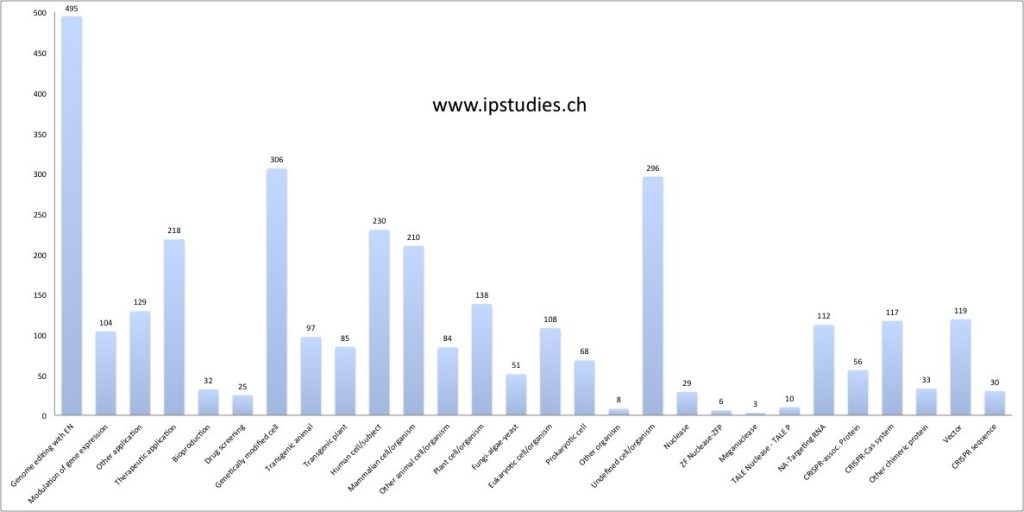Emmanuelle Charpentier and Jennifer Doudna just received a few hours ago the Nobel prize in Chemistry 2020 for “the development of a method of genome editing”, namely their 2012 discovery of the CRISPR/Cas9 genetic scissors which basically enables to “cut and paste” DNA. This scientific discovery has fueled an unprecedented biotechnology development in the past 8 years. When we started to analyze the genome editing patent landscape in Spring 2014, there were only 96 patent families(*) in our records in relation with CRISPR. We have now more than 7400 in our latest records – and adding an average of 200 more every month in 2020. What does this data tell us on who has taken advantage in engineering new life sciences solutions out of this amazing scientific discovery, now confirmed worth a Nobel Prize?
Continue readingTag: opposition
June 2017 – Acceleration of the CRISPR patent landscape growth
Three years ago, we finalized our first CRISPR patent landscape analysis, at that time combined with an analysis of the TALE patent landscape which was then significantly larger. There were only 90 CRISPR patent families in this early analysis… that is less than the whole set of new CRISPR patent publications in the past single month: 116 additional patent families in our latest CRISPR patent analytics data set.
The IPStudies 2017 CRISPR patent landscape is out, don’t miss it!
The CRISPR patent landscape keeps on developing at an increasing pace in 2017, with now up to three new patent families published every day! We have searched, reviewed and categorized more than 1146 patent families, now surveyed in our just released 2017 CRISPR patent landscape report.
CRISPR patent analytics – April 2016 update
For the first quarter of 2016, we have added another 105 patent families to our CRISPR patent monitoring set. The CRISPR patent landscape keeps on growing steadily, with on average one new CRISPR patent family publication every day.
Our updated claim coverage analysis confirms the trends and facts we’ve reported in our detailed January 2016 patent landscape. 
Less licensing deals have been announced in the past few months, as the whole industry is watching for USPTO updates on the PTAB interference between two of the pioneering patent filings. More qualitative financial analysts are also now monitoring the outcome of this dispute, after the first successful CRISPR IPO (NASDAQ:EDIT) by Editas, a licensee of the pioneering Broad Institute patents, and the early April announcement of its own IPO filing by rival Intellia, a licensee of the pioneering University of California patent. In Europe, the CRISPR patent landscape is just as uncertain, with multiple (many anonymous – “strawman”) oppositions filed on the first granted patents.
While the uncertainty surrounding the licensing of the core technology patents is getting most media and business attention currently, the next rounds are already taking shape behind this main scene, with near 600 silent patent families claiming their own exclusive share of technology improvements, design-around attempts, and a myriad of specific application developments. There will be further disputes, settlements, and maybe even patent pools in the CRISPR era. The whole data is there, in multiple patent offices and databases – at IPStudies, we search, retrieve, sort and classify this data set to facilitate the CRISPR technology and competition watch for our customers: for more information on our patent landscape and patent monitoring services, check our CRISPR patent analytics offering or send us your inquiry through our contact form.
